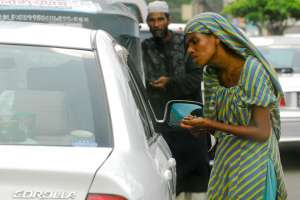
The millennium development goals (MDGs), which end in 2015, are a remarkable set of agreed global aspirations, with the world community committing to eradicate extreme poverty for the first time in history.
In the 19th century around 80% of the population was poor with affluence generally uncommon. Over the last two hundred years, however, thinking about poverty has changed dramatically. Where once poverty was considered the norm, governments now use public policy to make it the exception.
The very first MDG target is to reduce by half the proportion of people with incomes below a-dollar-a-day. This poverty threshold was updated to $1.25 per person per day by the World Bank in 2008 (at 2005 purchasing power parity), and is widely used as a benchmark to generate globally comparable estimates.
What does this sum of money represent? How relevant is it today in Asia and the Pacific? We look at these two questions.
What does $1.25 represent? This is an idea of absolute poverty—the same amount of resources are needed to survive regardless of where one lives—independent of changes in income distribution. It is the sum of money needed for a minimum consumption basket of food and non-food items for an adult’s survival and basic sustenance. If everyone’s incomes go up, poverty comes down. With such a yardstick cross-country and over-time comparisons become easy.
The concept of such a fixed absolute threshold has been debated for many reasons – an obvious one being that the amount of resources needed to survive is not the same in all locations. In Mongolia’s sub-zero temperatures a person cannot survive without winter heating, while in Samoa heating would not be relevant at all.
Relative poverty, in contrast, classifies people not vis-a-vis a fixed threshold, but with others in the population. Distance from the median is one way to capture relative disadvantage. Relative poverty prevails in all societies. In wealthier ones where extreme deprivation is less prevalent, it is the exclusion due to disparities between the relatively deprived and the privileged that causes concern.
But how relevant is $1.25 today in developing countries of the Asia and Pacific region? Absolute deprivation is widely prevalent as we approach 2015. Even though the share of poor people by this definition has more than halved, the region remains home to around 700 million poor, or two-thirds of the world’s total share. Meanwhile something else has changed significantly to question the relevance of $1.00 or $1.25 as an absolute poverty threshold.
The minimum consumption basket needed for survival and sustenance is not what it was a decade back—its composition has dramatically altered. Even without allowing for any improvement in living conditions, greater marketization, urbanization and aging have changed the components and cost of what is minimally needed.
Non-food consumption, including services, has increased relative to food. Ill-health takes an increasing share of out-of-pocket expenditure; the use of soap and other purchased toiletries is up; rapid and unplanned urbanization means more money for worse shelter and payment even to squat; more single-headed and multi-local families need communications and money transfers; those living in far-away workplaces need to spend more on transport expenses and access to information is now considered essential. Moreover, as more things have to be purchased from the market, more cash is needed. We can see dramatically shifting consumption patterns in rural as well as in urban areas.
Clearly the consumption basket for the poor needs to be revised and the threshold updated. While Asia’s economies are seen as strong and getting stronger, this means little when large numbers still struggle to survive. Has the time come for Asia to update the absolute poverty yardstick? What is not counted is easier ignored.
This article was first published by the ADB Development Blog.







Comments are closed.